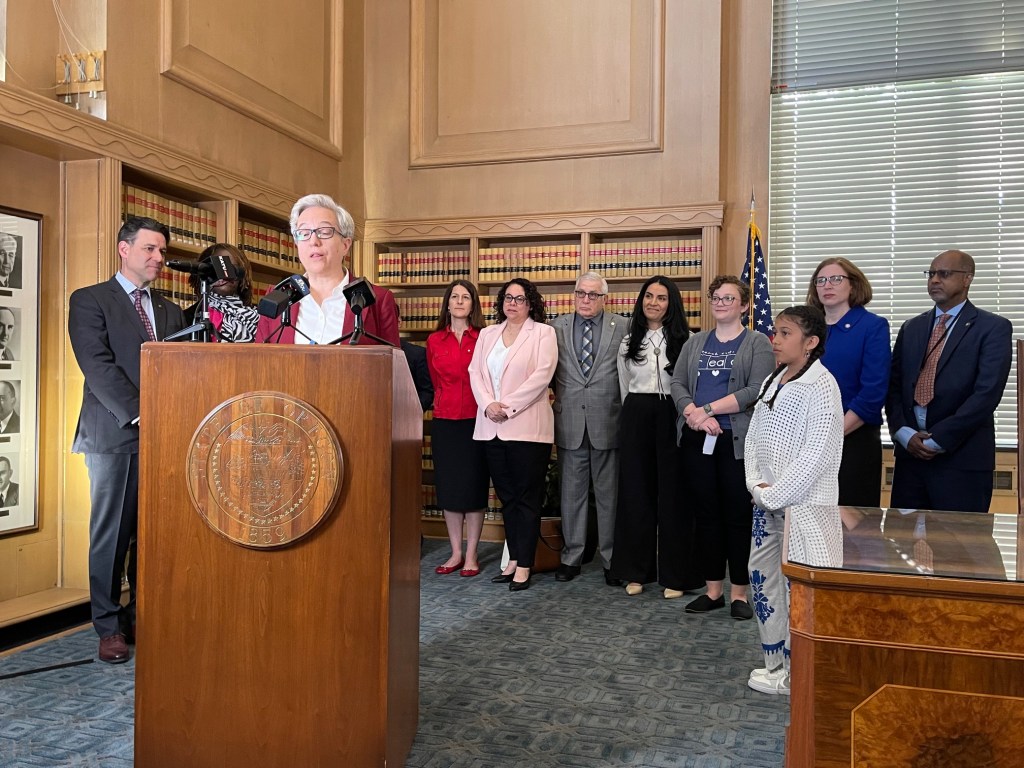Capital Chatter: Certainty is rare in Oregon politics
Published 5:27 pm Thursday, May 1, 2025

- On Wednesday, education advocates gathered with Gov. Tina Kotek as she signed bills that fund three years of summer-learning grants. (Dick Hughes photo)
Rarely does true certainty exist at the Oregon Capitol, despite whatever bills the Legislature passes and whatever actions Gov. Tina Kotek takes. Great triumphs leave open the possibility for unfulfilled promises. Bipartisanship ebbs and flows.
On Wednesday, education advocates gathered with Kotek at the State Library – the governor’s temporary headquarters during the Capitol reconstruction – as she signed bills that fund three years of summer-learning grants.
Sofía Vasquez, a fourth-grader at Meadow View School in Eugene’s Bethel School District, and Brittanie Sorensen, a district literacy coach, testified to the value of summer education. So did Janet Soto Rodriguez, deputy director of Foundations for a Better Oregon, whose Chalkboard Project was a powerful antidote to lagging student performance and rising school-district strife.
Trending
Kotek gave her pen to Sofía after signing the legislation.
The two bills were approved 56-0 in the House and 25-4 in the Senate. House Republican Leader Christine Drazan was among the sponsors of House Bill 2007, which revises the Summer Learning Grant program to focus on literacy. Another sponsor was Republican Rep. Boomer Wright, Reedsport, who attended Wednesday’s ceremony.
But only Democratic politicians spoke: Kotek; Sen. Janeen Sollman, Hillsboro; and Rep. Ricki Ruiz, Gresham, who was accompanied by his book-toting 3-year-old daughter, Maleni.
House Bill 5047 provides the money for the summer-learning grants.
“We now have $35 million for summer learning this year, along with the security of ongoing multi-year funding,” Charlene Williams, director of the Oregon Department of Education, said.
“In the past, our schools have had to quickly and often very creatively build Rome in a day, shifting their campuses at the end of the school year to provide summer learning opportunities with less-than-ideal time to plan and prepare … .
Trending
“With this legislation, they won’t have to go through that scramble anymore. Schools will be able to begin planning for high quality summer learning programs in the fall of the prior year.”
Let us hope she’s proved right.
But what the Legislature gives, the Legislature can take. In other words, “Don’t count your chickens before they hatch.”
The future of these grants – and most other state spending – rests on the economy, which looks increasingly precarious. Although financial markets improved Thursday, some economists see “early warning signs of a recession or something similar to the 2008 financial crisis.”
The Legislature is marking time until May 14, when the next quarterly revenue forecast is issued. That revenue prediction will form the basis for the 2025-27 budget. Wild cards are the Trump administration’s on-and-off decisions on federal layoffs, federal funding reversals and tariffs.
More Oregon companies are announcing layoffs and shutdowns. On Thursday, Jeld-Wen said it would permanently close its Chiloquin facility, eliminating jobs for 128 rural Oregonians.
During Kotek’s press conference after the bill signings, she acknowledged the state’s financial situation might not be resolved before the Legislature’s June 29 deadline to adjourn. Meanwhile, legislative budget writers have prepared scenarios ranging from program increases to program cutbacks.
Another consideration: Oregon’s changing demographics pit one program against another, especially when there’s not enough money to go around. While major school districts are seeking increased funding, their enrollments are decreasing.
“The demand for public services varies by age groups. Demographics are the major budget drivers, which are modified by policy choices on service coverage and delivery,” state economists wrote in their February forecast.
“As a sign of the massive demographic structural change of Oregon’s population, the number of persons 65 years and older has exceeded the number of children under the age of 18 since 2023. To illustrate the contrast, in 2000 the older adult population numbered a little over half of the number of children in Oregon, now they outnumber the children.”
Revenue won’t be the only thing to consider in the May 14 forecast.





